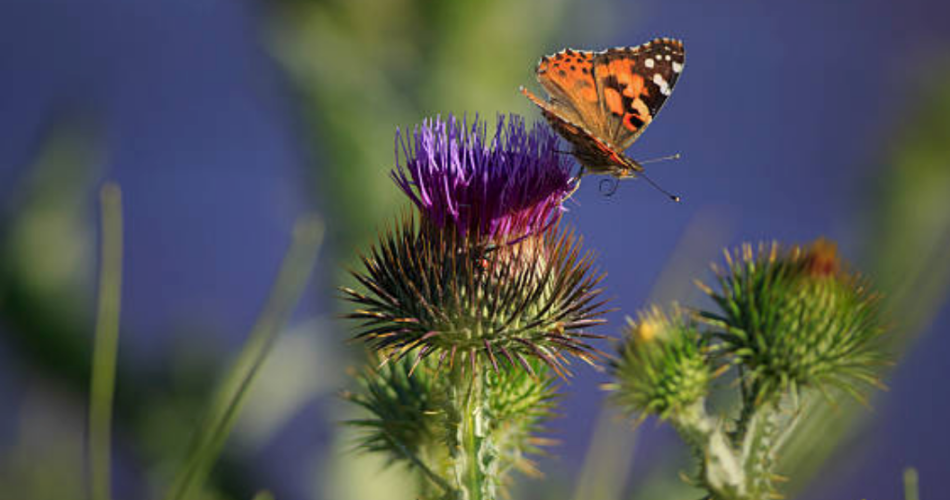You probably know all about the benefits of outdoor play for young children’s physical health. Outdoor spaces provide a natural setting for active physical play, helping children gain bone and muscle strength and supporting a healthy weight (Physical Activity Advisory Committee, 2018).
And because outdoor settings spark children’s natural curiosity, they also provide great opportunities for active learning, investigation and discovery.
Here are a few suggestions of ways to engage young children in rich and meaningful learning outdoors:
Facilitate exploration with infants.
The sights, sounds and sensations of the great outdoors are fascinating for infants. As infants gaze at and begin to reach for objects outdoors, respond to their interest by labeling and describing objects with words. Support non-mobile infants in exploring by bringing them to touch the texture of trees, grass and plants in the outdoor space. Listen closely and delight with infants as they notice and respond to various sounds in the environment.
Extend learning through investigation.
Observe the children in your care as they explore outdoors. What captures their attention and curiosity? Then facilitate an investigation of something they find interesting. More than a one-time activity, an investigation is sustained over an extended period of time, allowing children to explore a topic in deep and meaningful ways as you embed opportunities for learning across domains.
For example, if children are interested in the butterflies they notice outdoors, you may invite them to sketch the butterflies; take photos of butterflies to sort and classify based on similarities and differences; learn the names of different butterfly species; read fiction and nonfiction books about butterflies; count and graph the number of butterflies on the playground; and so on. You can even enhance the indoor learning environment with pictures and posters of butterflies, plastic butterflies and butterfly specimens.
Watch this video to see how one teaching team facilitated an investigation about rocks based on the interest of their preschoolers.
Plant a garden.
Gardening is a wonderful learning experience for young children, helping them gain independence as they experience the pride of caring for something outside themselves. You can provide them with choices in helping decide what to plant based on what seeds are available and what can be planted in your area during the current season. (Consult with a regional planting chart, such as the charts available in the University of Arizona Cooperative Extension guides in English and Spanish.)
Children can be involved throughout the process, from planting to harvesting, watering and weeding. They can measure and chart the growth of their plants, and you can take photos for the children to refer to back to throughout the growing process. Even toddlers can help care for plants and harvest vegetables when they are ready.
The United States Department of Agriculture (USDA) offers a free nutrition education kit with gardening activities for child care centers and family child care.
Safety Tip: Some common plants can be poisonous or harmful if ingested. Make sure all the plants in your garden are safe and non-toxic. Check out Caring for Our Children’s list of non-poisonous and poisonous plants when considering what to plant.
Get muddy.
Mud is one of the simplest, most available and engaging learning materials for young children. Open-ended, stimulating and wonderfully messy, the opportunities for learning with mud are endless. You can provide opportunities for math learning by measuring and mixing mud with children; introduce new vocabulary and science concepts as you explore the properties and uses of mud; and provide opportunities for social interactions as children work together to build sculptures, roads, structures and make muddy culinary creations.
For a positive mud experience, planning in advance makes cleanup easier. Provide waterproof smocks to protect children’s clothes, or have families provide an extra change of clothes. After mud play, lead children in washing the pots, pans and tools in soapy water.
For more mud play ideas, visit NAEYC’s Preschool Play Plans: Mud-Luscious Play
Practice sun safety.
As you spend time in Arizona’s great outdoors with children, it is critical to protect their skin from harmful UV rays, as skin damage in childhood increases the likelihood of skin cancer later in life. Shaded outdoor spaces, sunscreen, hats and sunglasses can all help protect from harmful rays.
Visit AZDHS’s Empower website for sun safety tips, information and resources.
At Quality First, we love to hear from you! Share your story about how you foster children’s learning in the great outdoors. Send an email to QualityFirst@FirstThingsFirst.org.
